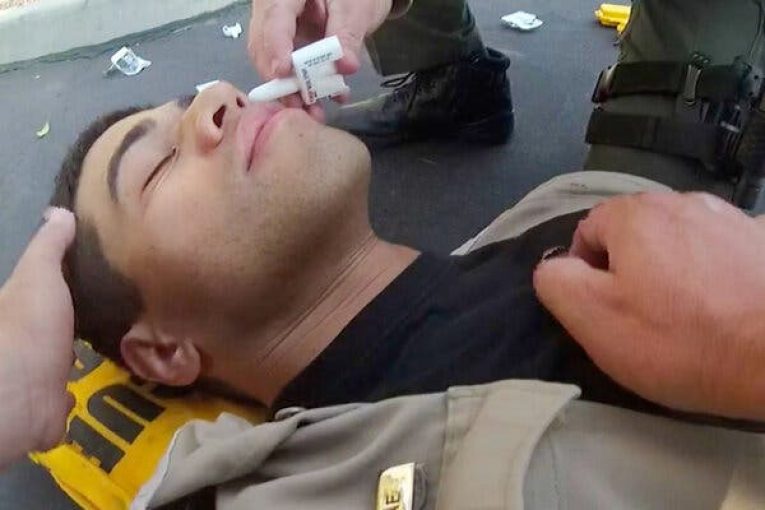

By Stacie Guevara
SAN DIEGO, CA – San Diego County Sheriff’s Deputy David Faiive’s claim that he suffered an overdose from fentanyl after handling illegal narcotics July 3—and a video made by the Sheriff’s Department—continues to generate significant pushback from the public.
“The Sheriff’s Department needs to offer as much transparency as it can going forward, and release the unedited video and Faiive’s medical tests after his collapse. Fentanyl is already terrifying and has debilitated or killed tens of thousands of Americans. But its dangers should be accurately described,” according to an editorial by the San Diego Union-Tribune Editorial Board.
According to the video, there was no medical diagnosis that Faiive actually overdosed on fentanyl. Sheriff Bill Gore concluded Faiive had overdosed, which was not a medical diagnosis and no medical professionals were at the scene, note critics, who emphasize the sheriff is not a doctor.
According to San Diego Union-Tribune editorial, Undersheriff Kelly Martinez said the video initiated discussions about law enforcement training. The article also read, “Health experts said the Sheriff’s Department got it  wrong, promoting misinformation, confusion and a false narrative.”
wrong, promoting misinformation, confusion and a false narrative.”
The San Diego Union-Tribune Editorial Board noted a New York Times analysis pointing out that Deputy Faiive didn’t have a reaction when given naloxone by another deputy, which would only happen if he didn’t have any opioids in his body.
Martinez said that another deputy gave Faiive naloxone, which saved his life. But as noted in the San Diego Union-Tribune article, health experts said contact with fentanyl wouldn’t lead to the reaction that took place in Faiive’s body.
In a slightly older article by the San Diego Union-Tribune, toxicology experts said they didn’t think Faiive suffered a fentanyl overdose.
In that article, the San Diego Union-Tribune addressed that older initial video created by the San Diego Sheriff’s Department, which was emotional and dramatized.
That article states Gore said he was shocked to hear pushback from toxicology experts and medical professionals, who said the “Sheriff’s Department got it wrong, promoting misinformation, confusion and a false narrative. Hundreds signed a petition calling for the video’s retraction.”
The newspaper editorial added, “This matters because it might make law enforcement officers and people in general less likely to try to help those who have overdosed.”
Finally, the Union-Tribune editorial criticized its own coverage of the affair.
“That the San Diego Union-Tribune’s initial reporting on the incident relied on characterizations made by sheriff’s officials, not medical professionals, is a problem, too. Incidents like this show why trust in law enforcement and the news media is eroding.”

